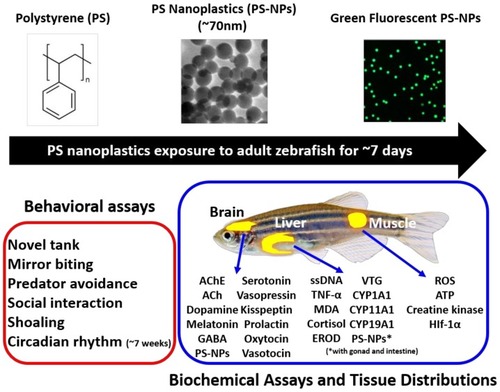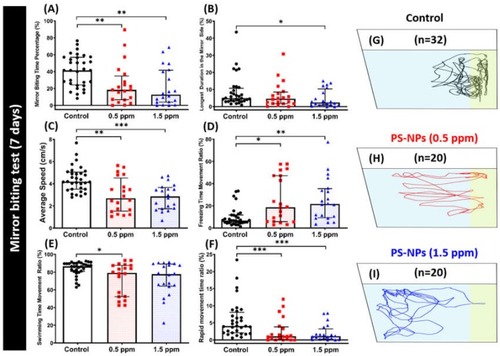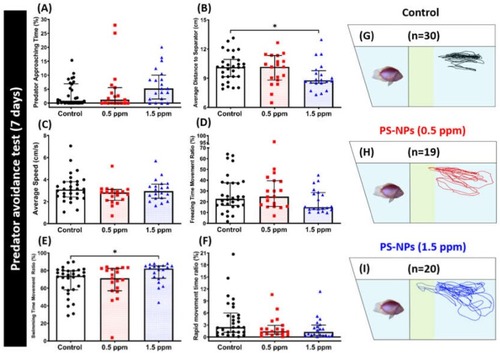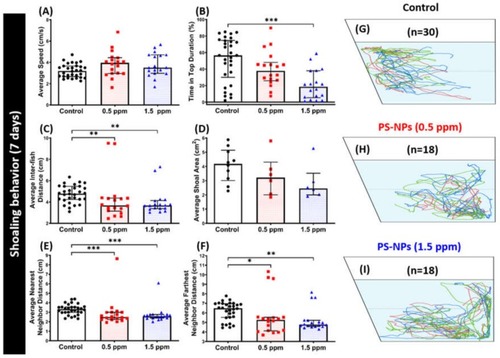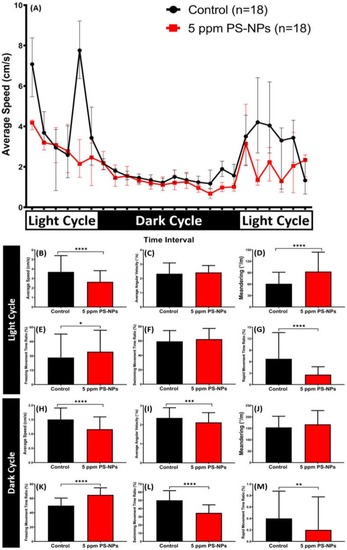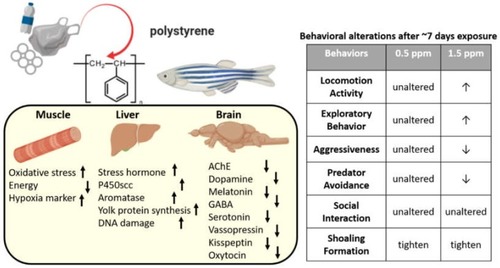- Title
-
Nanoplastics Cause Neurobehavioral Impairments, Reproductive and Oxidative Damages, and Biomarker Responses in Zebrafish: Throwing up Alarms of Wide Spread Health Risk of Exposure
- Authors
- Sarasamma, S., Audira, G., Siregar, P., Malhotra, N., Lai, Y.H., Liang, S.T., Chen, J.R., Chen, K.H., Hsiao, C.D.
- Source
- Full text @ Int. J. Mol. Sci.
|
The experimental design to evaluate the ecotoxicity of polystyrene nanoplastics (PS-NPs). The chemical structure and particle size of polystyrene used in this study were summarized in the upper panel. The behavioral toxicity assays for PS-NPs were summarized in the left-right panel (red color). The biochemical endpoints for PS-NPs toxicity were summarized in the right lower panel (blue color). |
|
Novel tank behavior endpoints comparisons between control and polystyrene nanoplastics (PS-NPs)-exposed zebrafish groups after a ~7-day exposure. ( |
|
Mirror biting behavior endpoints comparisons between control and polystyrene nanoplastics (PS-NPs)-exposed zebrafish groups after a ~7-day exposure. ( |
|
Predator avoidance behavior endpoints comparisons between control and polystyrene nanoplastics (PS-NPs)-exposed zebrafish groups after a ~7-day exposure. ( |
|
Social interaction behavior endpoints comparisons between control and polystyrene nanoplastics (PS-NPs)-exposed zebrafish groups after a ~7-day exposure. ( |
|
Shoaling behavior endpoint comparisons between the control and polystyrene nanoplastics (PS-NPs)-exposed zebrafish groups after a ~7-day exposure. ( |
|
The circadian rhythm locomotion activity assay for control and 5 ppm polystyrene nanoplastics (PS-NPs)-exposed zebrafish groups after a seven-week exposure. ( |
|
Comparison of the tissue distribution of green fluorescence-labeled nanoplastics among different tissues in zebrafish after ~30 days of polystyrene nanoplastics (PS-NPs) exposure. The data are expressed as the mean ± SEM and they were analyzed by One-way ANOVA, which continued with post hoc analysis ( |
|
Schematic diagram of the biochemical and behavioral changes after polystyrene nanoplastics (PS-NPs) exposure in zebrafish. Left panel showing the biomarker expression alteration (↑: up regulated, ↓: down regulated) in the muscle, liver, and brain after PS-NPs exposure. Right panel showing the behavioral alteration after PS-NPs exposure at either 0.5 or 1.5 ppm (↑: higher behavior level, ↓: lower behavior level). |

